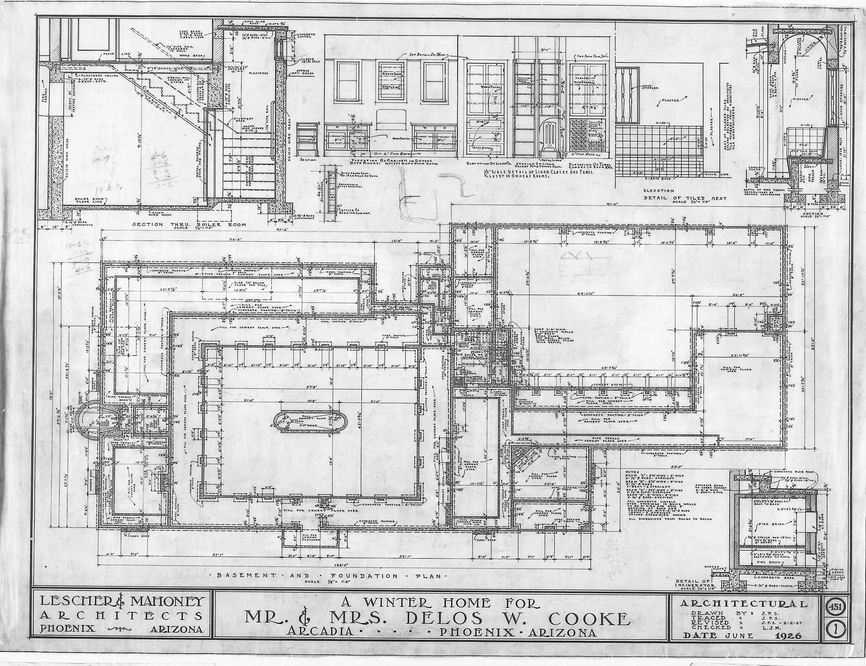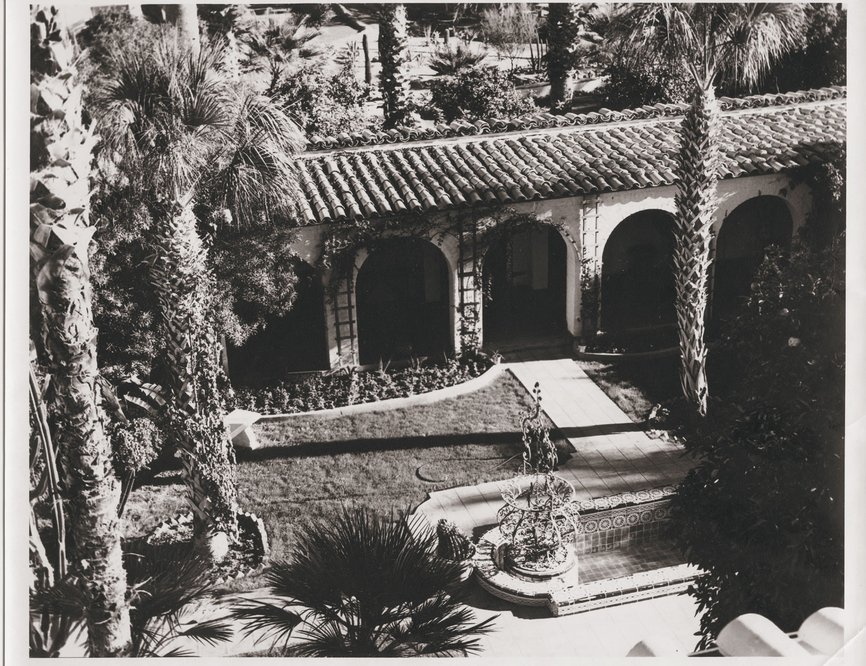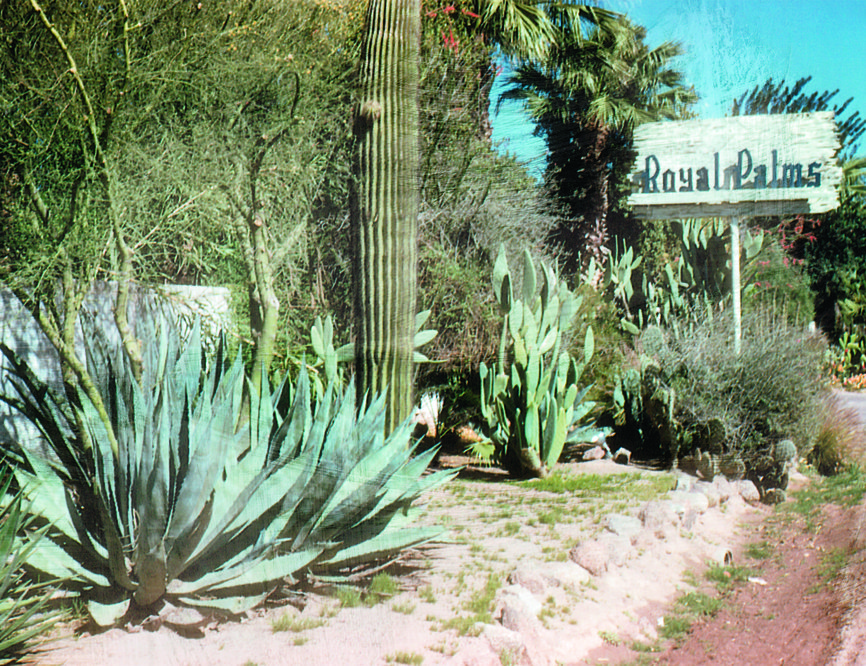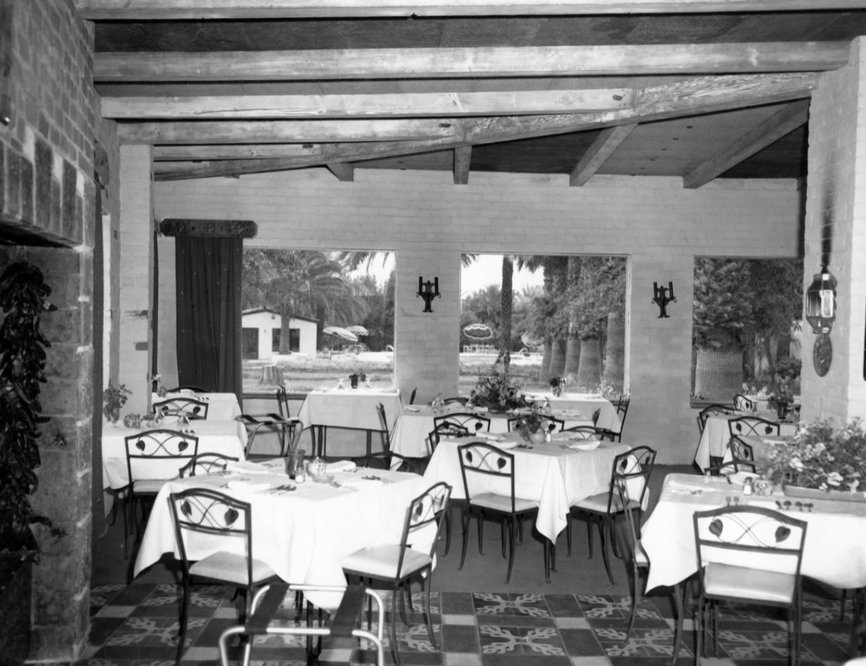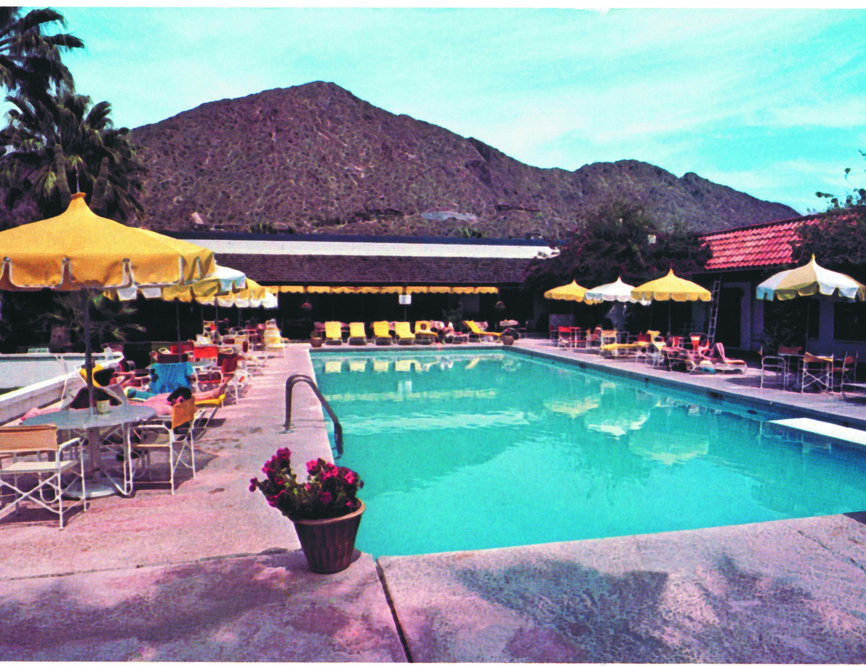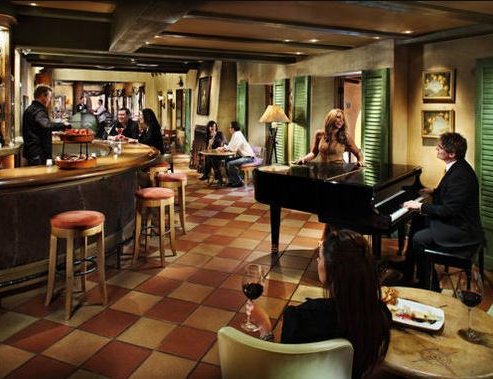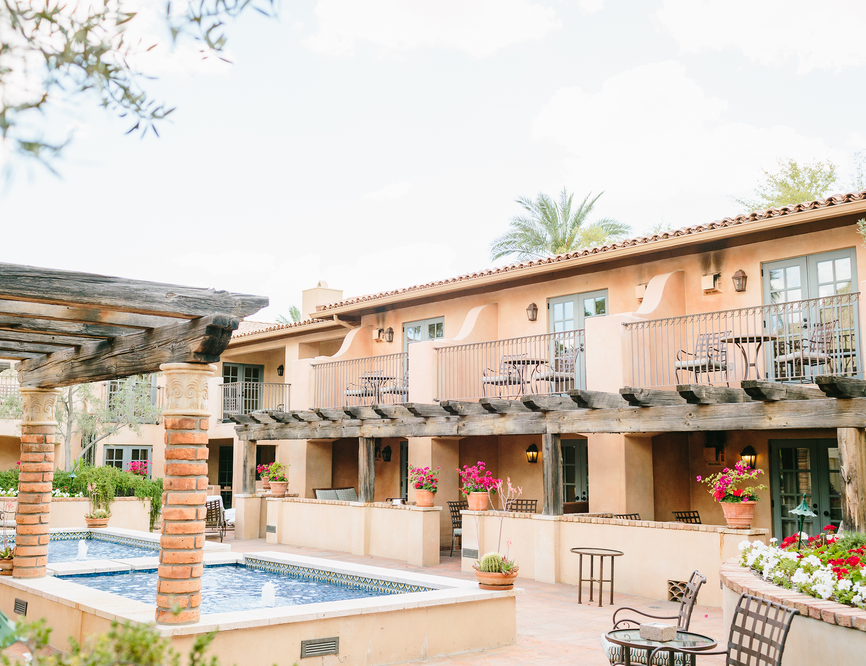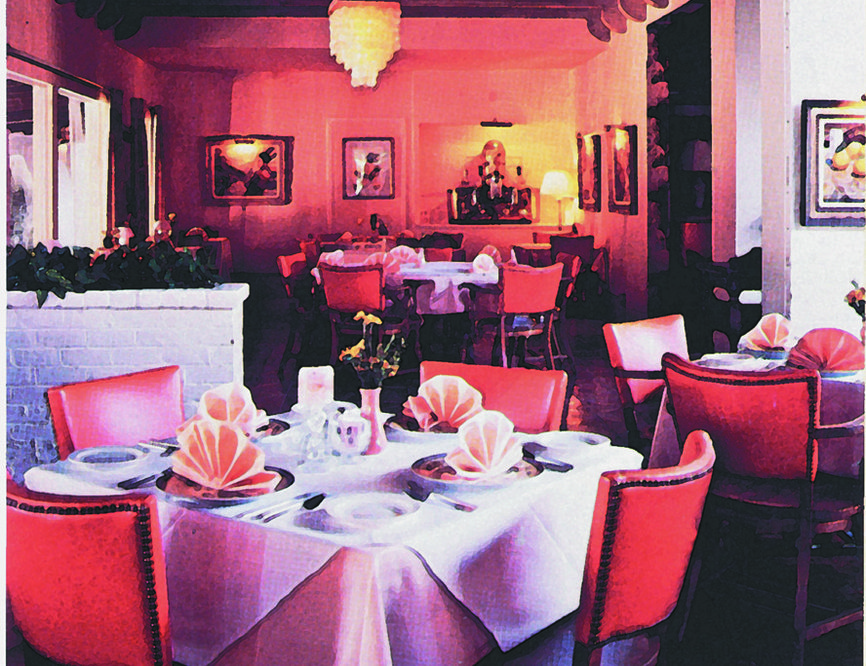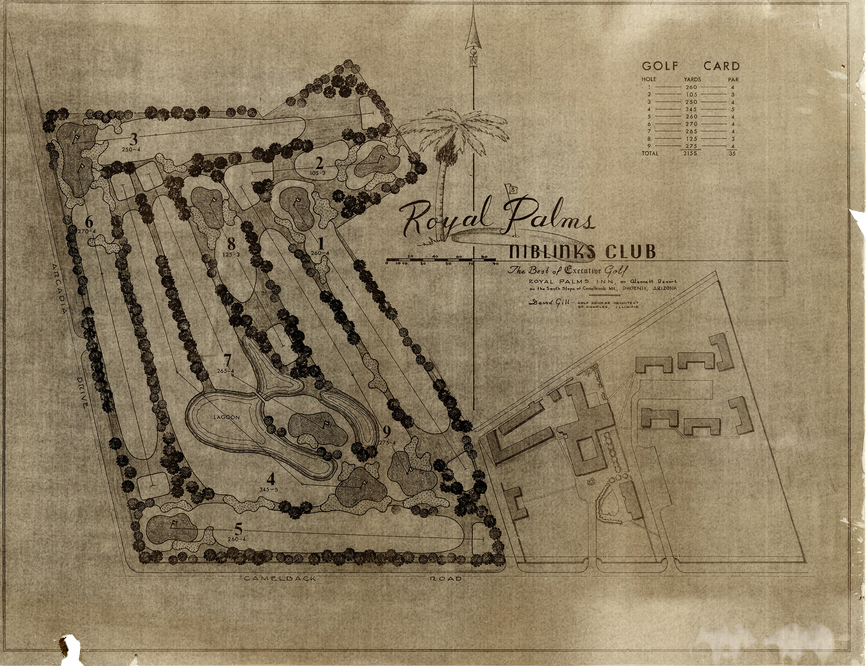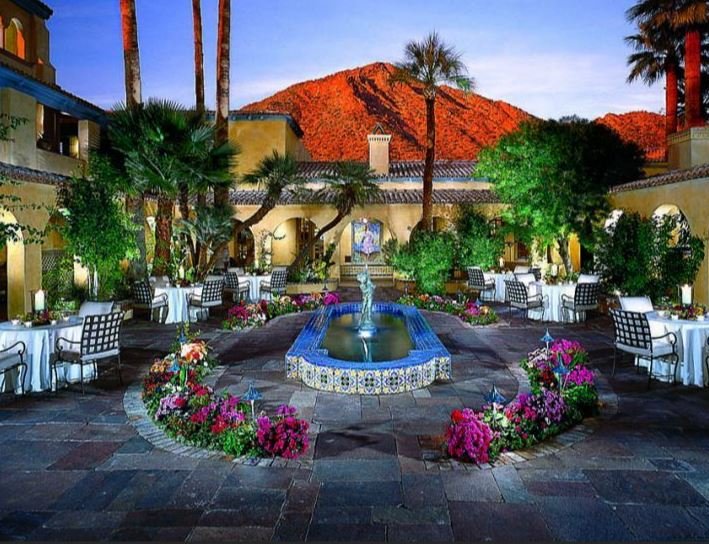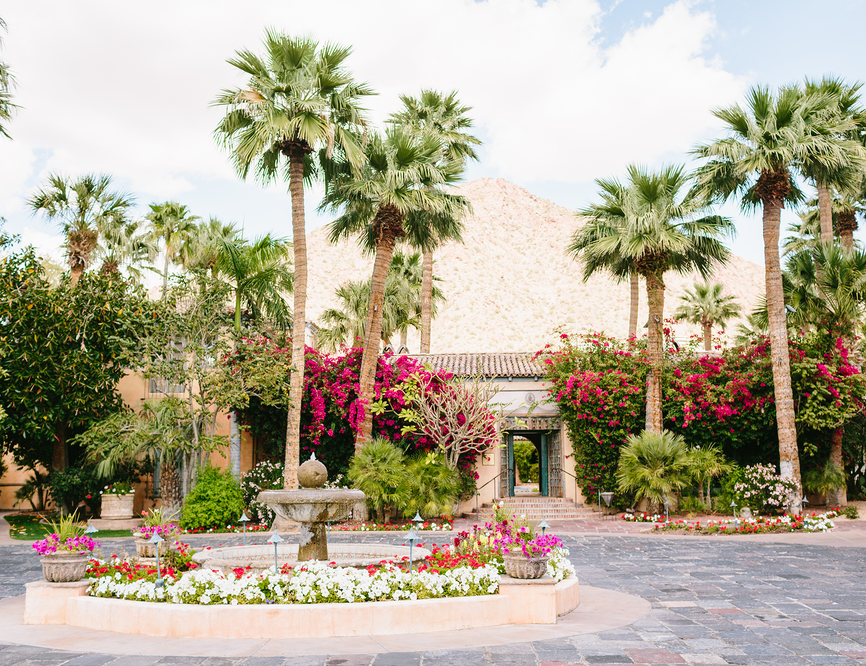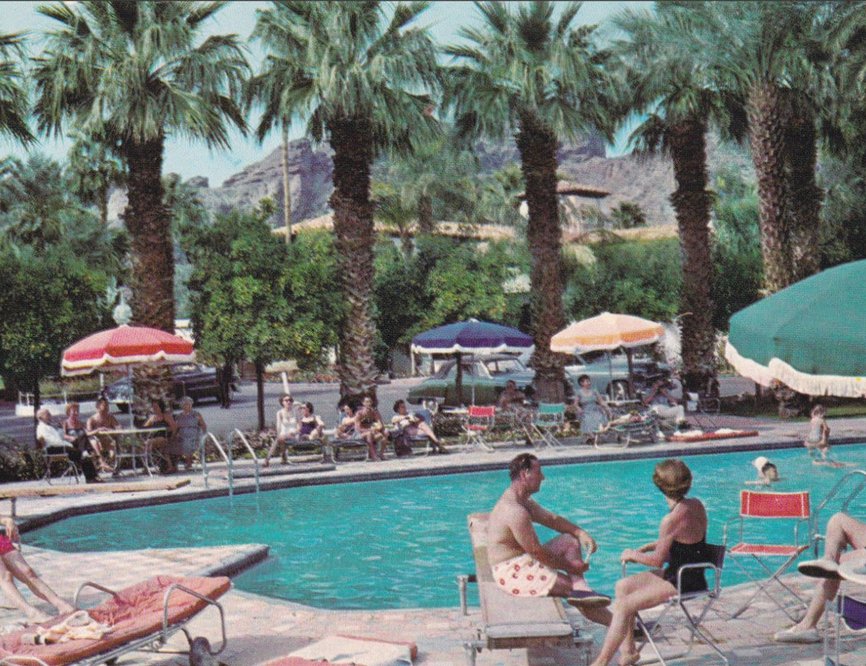1926 – 1929
New York financier Delos Willard Cooke of the Cunard Steamship company and his wife Florence Meador Cooke began building an estate on Camelback Road, completed in 1929. The Cookes called their estate El Vernadero (“winter haven”) and lived there between 1926 and 1929. El Vernadero was a 3,500 sq ft Spanish Revival villa built on 40-65 acres that had been a citrus orchard. They planted many rare species, including some 900 palms. The decision to move to the Phoenix area was driven by Florence’s declining health and to escape the cold winters of the East Coast.
El Vernadero included 15 rooms around a courtyard with a fountain. To the east of the breezeway was the living room, to the west was the guest bedroom and the Cookes’ bedrooms, the north wing comprised the dining room, kitchen and billiard room. There were smaller rooms for servants, a chauffeur, storage for travel trunks and a laundry room. The covered walkway around the courtyard was interspersed with archways that gave views of the lushly planted courtyard and the tiled, Moorish-influenced reflecting pool.
Each of the 24 arches which surround the building’s inner courtyard display tile mosaics depicting crests of Spanish provinces. The Cookes were collectors of antiques. When the Cookes traveled they returned with colorful tiles and beautifully carved chests, chairs and credenzas.
The mansion was at the end of a long driveway flanked by palm trees. Visitors entered from through a pair of huge wooden doors that opened onto the zaguan (covered breezeway) which, in turn, opened onto the courtyard. Above the doors to the mansion the Cookes placed the crest “En Dieu Est Ma Fiance, or, loosely translated from French, “To God I am betrothed.”
